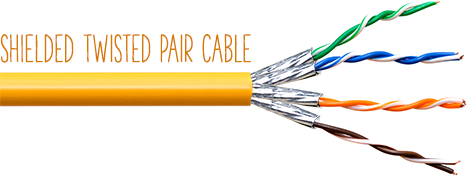The trouble with shielding
Electric fields and magnetic fields have similarities, but they also have distinct differences. Studies show that many students completing an electrical engineering program have a fundamental misunderstanding of the behavior of these two fields. This seems to be borne out with respect to cable selection and shielding properties.
Signal cables are frequently constructed in shielded, twisted pairs. The shielding materials commonly used are effective for electric field attenuation, but they are not effective for shielding magnetic fields.

Mu-metal shields can attenuate magnetic fields, but they are not found in most labs. Therefore, most cables when placed in a magnetic field will have an induced noise signal regardless of whether they contain a “shield.”
Balancing induction noise
The key to minimizing inductively coupled noise is to use a dual-conductor cable and to make sure that the amount of induction in each of the two conductors is equal. In this case, the induced noise is a common-mode noise (present equally in both conductors) that can be effectively removed by common-mode rejection techniques routinely deployed in lab equipment.
Minimizing the length of cable connections of magnetic field measurement instruments and using twisted-pair conductors are two ways you can help ensure that both cables have the same induction. For more cabling tips, as well as other measurement missteps to avoid, download our free guide:

